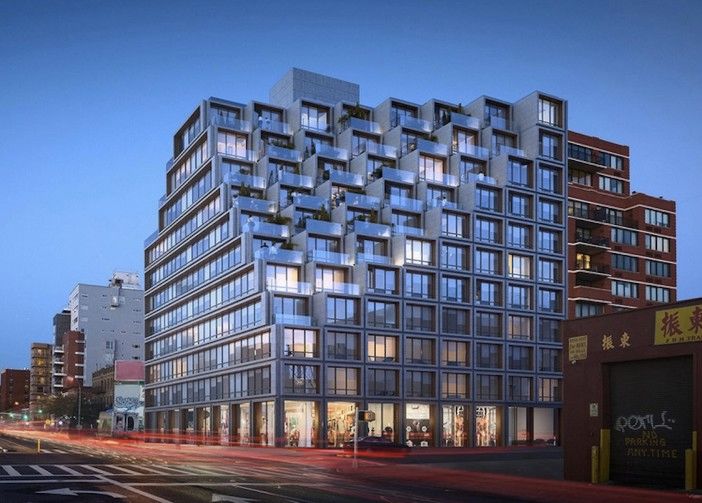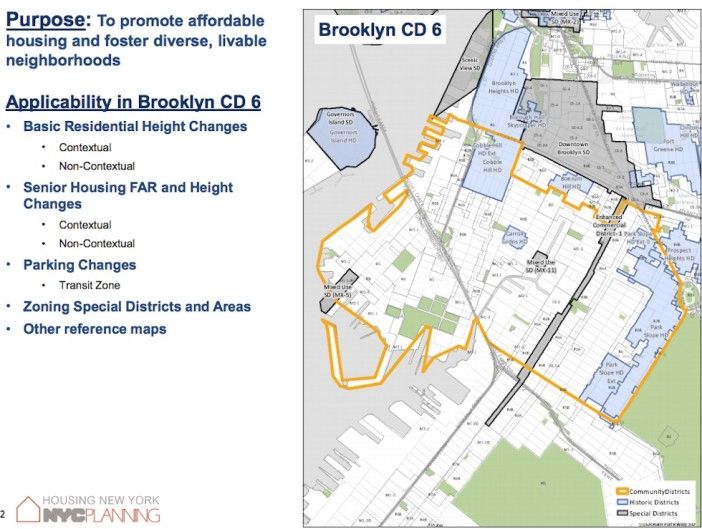City Council Overwhelmingly Approves Mayor’s Controversial Zoning Changes


The City Council voted overwhelmingly Tuesday in favor of two controversial zoning changes proposed by the mayor to spur the construction of affordable housing.
The proposals, Zoning for Quality and Affordability (ZQA) and Mandatory Inclusionary Housing (MIH), loosen zoning laws in some neighborhoods for developers who build affordable housing for seniors or low- and middle-income tenants. The changes are key parts of the Mayor’s plan to create and preserve 200,000 affordable housing units over the next 10 years.
Some community boards, civic groups, and housing advocates came out strongly against the proposals when they were introduced last year — arguing the plan left out the most needy New Yorkers while allowing developers to run roughshod over their communities. However, the proposals won approval from the City Council after key changes were made to the laws.
In early February, Park Slope Stoop published a statement of support by Council Member Brad Lander for Mandatory Inclusionary Housing. Lander wrote that back in 2003, he favored mandating “that developers include some affordable units for low- and moderate-income families.”
“We lost that fight,” wrote Lander, and points out how 4th Avenue has undergone the following changes:
“Fourth Avenue was upzoned, and many hundreds of market-rate units now line the avenue — but not one single affordable unit. It was a tremendous lost opportunity for a more inclusive Park Slope. Our efforts did help to win the “voluntary inclusionary zoning” program that produced some low-income housing in Greenpoint-Williamsburg, and on Manhattan’s West Side. But as a 2013 study by my office showed, many developers did not “volunteer” — so only 13% of the units in voluntary IZ areas were affordable (and only 6% in voluntary IZ areas outside of those two neighborhoods).”
At the March 17 vote at the Committee on Land Use, Lander said, “The next time things like this happen in every neighborhood — and I look forward to that including the Gowanus neighborhood — […] where we will be able to with, smart and good community planning, to plan for the planning, the infrastructure, the urban design, the mix of use we want and to guarantee affordable units through MIH.”

The City Council also tweaked some of the height requirements in order to preserve the character of their neighborhoods. However, the biggest change, which ultimately won over some of the affordable housing groups who opposed the plan, were changes to MIH that made the new housing stock more accessible for lower income neighbors.
They added an option for developers to set aside up to 20 percent of housing to those making 40 precent of area median income ($31,000 for a family of three). They also lowered the highest tier option from 120 precent of AMI to 115 percent.
De Blasio celebrated the passage of his proposals Tuesday.
“New York City is now one step closer to being a city where everyone can work and live,” the Mayor said in a statement. “Years from now, when working-class families and seniors are living soundly in their homes without fear of being priced out, we will look back on this as a pivotal moment when we turned the tide to keep our city a place for ALL New Yorkers.”
However, the approved plan still drew scorn from many advocacy groups. More than 40 organizations, representing tenants, workers and homeless urged the City Council to reject the plan. And a group of protestors had to be driven from from the Council chamber when they superglued their hands together while demonstrating against during Tuesday’s vote, the Daily News reports.
In the end, ZQA passed the City Council 42-5, while MIH passed 40-6 with one abstention, according to the Daily News.
With additional reporting by Donny Levit.




